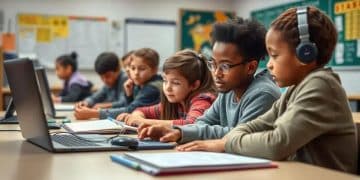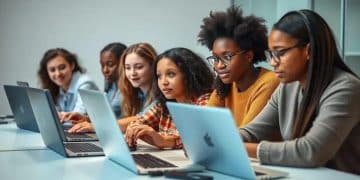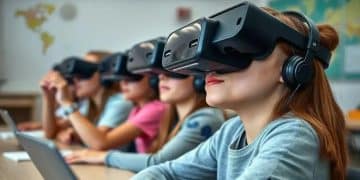Gamified learning platforms trends that can transform education
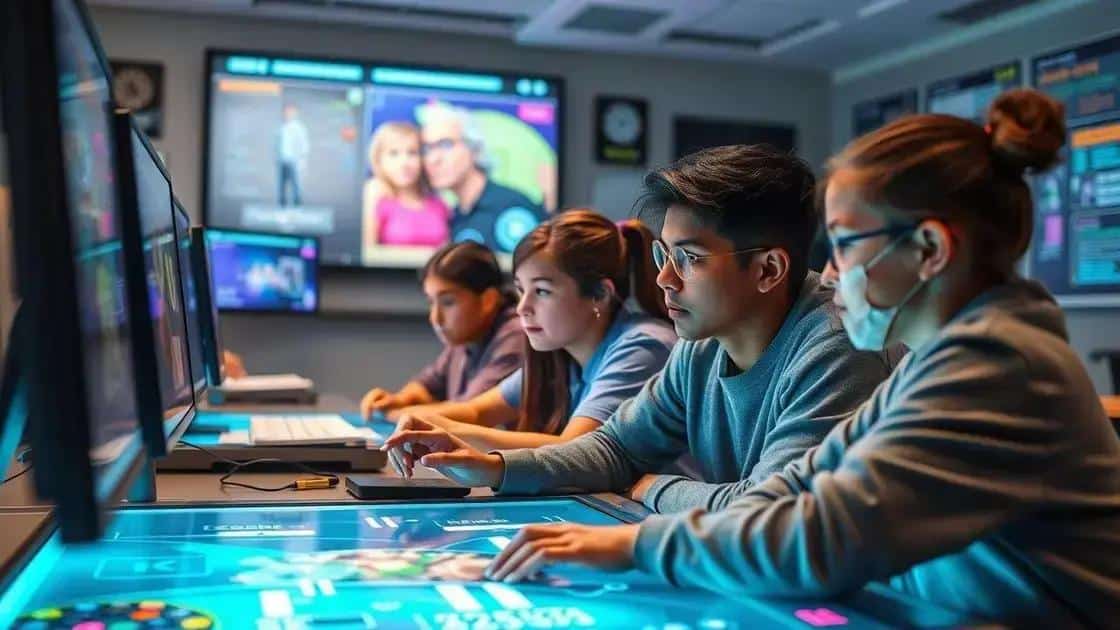
Gamified learning platforms enhance education by integrating game elements that boost engagement, personalize learning experiences, and foster essential skills like critical thinking and collaboration.
Gamified learning platforms trends are changing how we approach education today. Have you noticed how interactive and fun learning has become? Let’s dive into these trends and see what’s in store!
Understanding gamified learning platforms
Understanding gamified learning platforms is key to unlocking their potential. These platforms harness the motivational power of games to engage learners in a meaningful way.
At the core of these systems lies the idea that learning can be both educational and enjoyable. By integrating game mechanics, these platforms aim to enhance user engagement and provide feedback in real-time.
What are gamified learning platforms?
Gamified learning platforms use game-based elements to facilitate education. These elements include:
- Points and rewards for completing tasks
- Leaderboards to foster competition
- Levels and achievements that track progress
By utilizing these features, platforms create an interactive environment that motivates learners. They often incorporate storytelling and challenges, making lessons more relatable.
Benefits of gamified learning platforms
These platforms bring a variety of benefits to both students and educators. They promote higher levels of engagement, which can lead to better learning outcomes. Here are some advantages:
- Increased motivation: Game elements encourage students to participate actively.
- Customized learning: Learners can progress at their own pace, focusing on areas that need improvement.
- Social interaction: Many platforms foster collaboration, allowing learners to share experiences.
As students experience rewards for their efforts, they often develop a deeper connection with the subject matter. Moreover, teachers can track student progress easily, enabling customized support.
Key trends shaping gamified learning
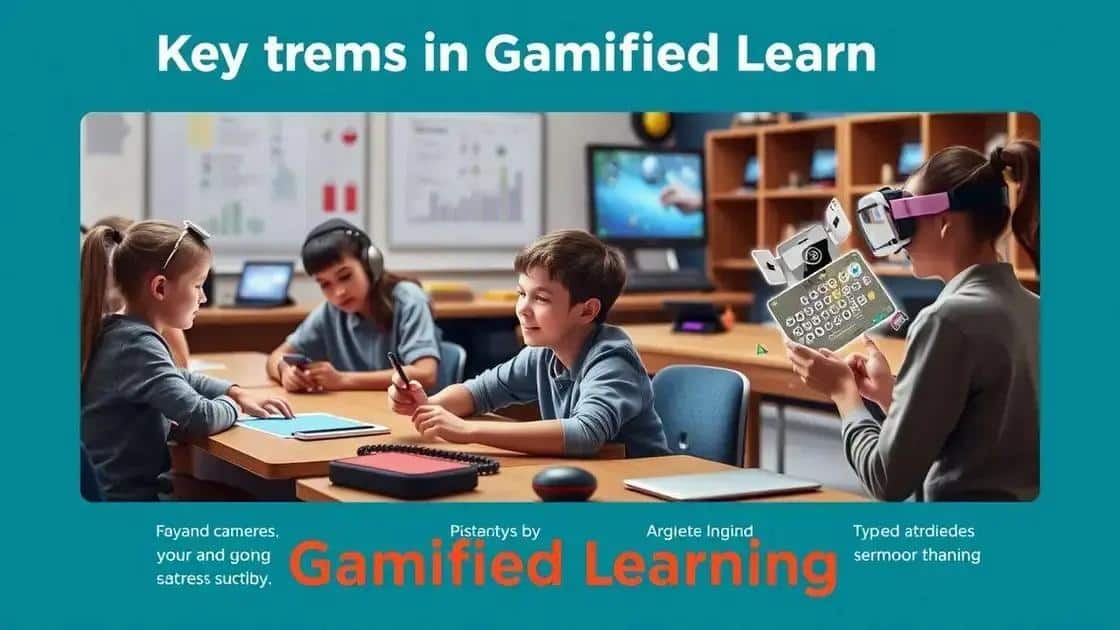
Understanding the key trends shaping gamified learning is essential for educators and developers. These trends reflect how technology influences education in exciting ways.
One significant trend is the use of adaptive learning technologies. These technologies adjust the difficulty of tasks based on the learner’s progress. As students play, they receive personalized challenges that keep them engaged.
Integration of social learning
Another important trend is the integration of social learning features in gamified platforms. Learners can interact with their peers, collaborate on projects, and share achievements. This creates a sense of community and encourages participation.
- Collaboration: Group activities foster teamwork.
- Peer feedback: Learners can give and receive feedback from classmates.
- Leaderboards: Competitive elements motivate students to improve.
Additionally, the use of augmented reality (AR) is emerging in gamified learning. AR enhances the learning experience by overlaying digital information onto the real world. Imagine using a phone to visualize complex concepts while learning.
Focus on mental health and well-being
More platforms are also focusing on the mental health and well-being of learners. Game dynamics that promote emotional bonding, stress relief, and resilience are becoming prevalent. By including elements that enhance well-being, gamified learning can create a more supportive educational environment.
Incorporating mindfulness features within games allows students to improve their concentration and reduce anxiety. Finding a balance between challenge and support is key for success in this space.
Benefits of gamified learning in education
The benefits of gamified learning in education are numerous and significant. This approach not only makes learning more enjoyable but also enhances the educational experience for students.
One primary advantage is that it boosts student engagement. When students are actively involved in their learning, they tend to retain information better. Through game mechanics, such as rewards and challenges, students feel motivated to participate.
Improved knowledge retention
Gamified learning helps in improving knowledge retention. By incorporating interactive elements, students can revisit concepts in a fun manner. This leads to:
- Enhanced memory: Students remember lessons better.
- Practical application: They can apply concepts in real scenarios.
- Immediate feedback: Instant responses help students adjust their learning strategies.
Additionally, gamified platforms often cater to different learning styles. Whether a student learns best through visuals, audio, or kinesthetic activities, these platforms can adapt, allowing personalized learning experiences.
Developing critical skills
Gamified learning also fosters the development of essential skills. Students enhance their critical thinking and problem-solving abilities through interactive challenges. They often need to strategize and make choices, which promotes:
- Creativity: Finding unique solutions to problems.
- Collaboration: Working with peers on group tasks.
- Resilience: Learning to persist through challenges.
Moreover, by incorporating elements of competition, students develop a healthy sense of rivalry, which can lead to greater motivation. This push to excel can result in improved academic performance.
Future predictions for gamified learning platforms
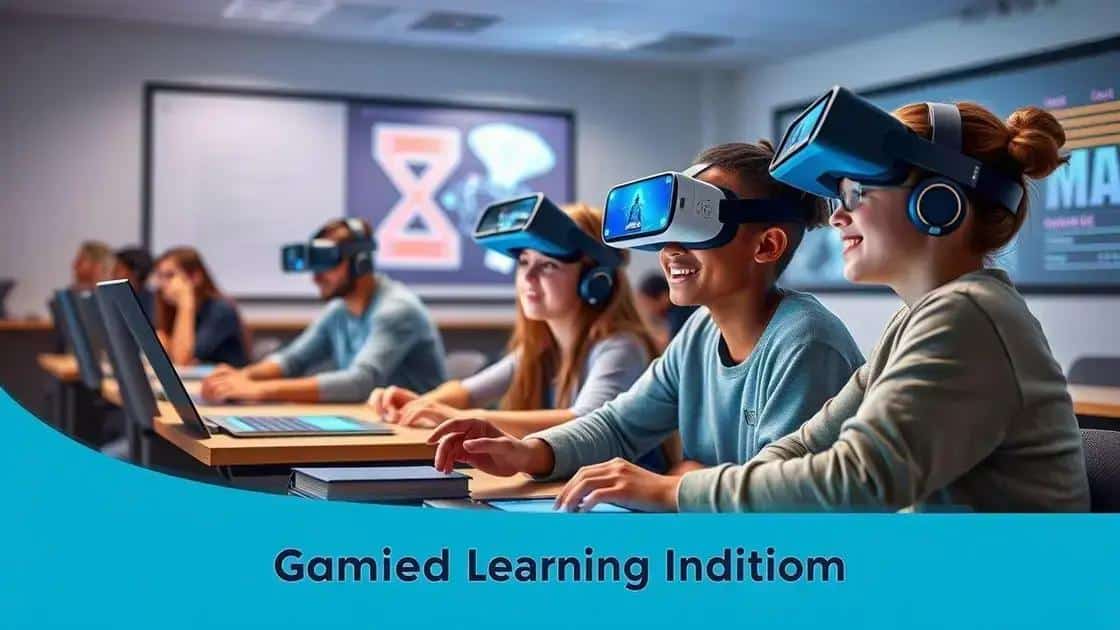
The future predictions for gamified learning platforms are optimistic and exciting. As technology advances, these platforms will likely evolve, making education even more engaging for students.
One expected trend is the increased use of artificial intelligence (AI). AI can personalize learning experiences by adapting content to meet individual student needs. This means every learner could have a unique journey based on their strengths and weaknesses.
Enhanced interactivity
Another prediction involves enhanced interactivity through virtual and augmented reality (VR and AR). These technologies will make learning experiences more immersive. Students will be able to explore new environments and concepts without leaving the classroom. For instance, learning about ancient civilizations might involve a virtual tour of historical sites.
- Immersive experiences: Students can engage in real-world applications.
- Increased empathy: Role-playing scenarios can foster understanding of different perspectives.
- Hands-on learning: Interactive exercises provide practical experience.
Additionally, the integration of social features will likely grow. Collaboration tools will allow students to work together seamlessly, regardless of their locations. This collaborative aspect can enrich the learning environment.
Data-driven insights
Data analytics will also play a significant role in the future of gamified learning. Educators will collect data on student performance, preferences, and behavior. This information will help tailor lessons for better outcomes. As a result, lessons can be updated based on real-time data, making learning more dynamic.
Furthermore, the focus on mental well-being will increase, with platforms emphasizing emotional support and resilience training. This holistic approach to education will ensure that students are not just academically prepared but also equipped with essential life skills.
FAQ – Frequently Asked Questions about Gamified Learning Platforms
What are gamified learning platforms?
Gamified learning platforms use game elements like points, challenges, and rewards to make learning more engaging and interactive.
How do gamified learning platforms improve student engagement?
They increase engagement by incorporating game mechanics that motivate students to participate actively in their learning experience.
What skills can students develop through gamified learning?
Students can develop critical thinking, problem-solving abilities, and teamwork skills by navigating challenges and completing tasks collaboratively.
What future trends can we expect in gamified learning?
Future trends include the use of AI for personalized learning, integration of VR and AR for immersive experiences, and a focus on mental well-being.


